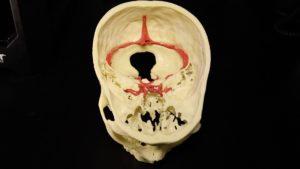Mount Sinai Unveils Medical Modeling Core: Will Provide Virtual Reality, Simulation, and 3D Printing Services
 The wonders of 3D printing in the medical field are far-reaching. You can create better spinal care, make a wide variety of prosthetics, or even 3D print amazing, origami-inspired self-folding medical implants. New York’s Mount Sinai Health System is certainly no stranger to 3D printing: the hospital’s chief of pathology and laboratory medicine recently worked with 3D printed bone material. Yesterday, they announced the creation of their new Medical Modeling Core, where clinicians can confer and order 3D prints for their cases. Led by the Department of Neurosurgery, this collaboration will provide virtual reality, simulation, and 3D printing services, with quick turnaround times, on a low-cost, fee-for-service basis.
The wonders of 3D printing in the medical field are far-reaching. You can create better spinal care, make a wide variety of prosthetics, or even 3D print amazing, origami-inspired self-folding medical implants. New York’s Mount Sinai Health System is certainly no stranger to 3D printing: the hospital’s chief of pathology and laboratory medicine recently worked with 3D printed bone material. Yesterday, they announced the creation of their new Medical Modeling Core, where clinicians can confer and order 3D prints for their cases. Led by the Department of Neurosurgery, this collaboration will provide virtual reality, simulation, and 3D printing services, with quick turnaround times, on a low-cost, fee-for-service basis.
This resource is the first of its kind, catering to the patient-specific 3D modeling requirements for the Mount Sinai clinicians. The simulation, prototyping, and 3D printing resources developed at Mount Sinai are pretty rare for a medical institution. The 3D printed models will be used in the planning stages for minimally invasive approaches, and can also be used in a surgery trial run. They will also be invaluable during the patient consultation process. Surgery can be a pretty scary thing, and patients who can see and touch these models will surely feel more at ease before their procedures take place.

Multi-structure 3D print of patient-specific pathology including epidermoid cyst (green), arterial vasculature (red), fifth cranial nerve (orange), seventh and eighth cranial nerves (yellow), and skull base (white). Each component of the print was individually segmented from registered CT and MR data to produce the final result. Multicolor printing was achieved using a 3D Systems ProJet 660 3D Printer. [Image/Caption: ISMMS Neurosurgery]
“We’re unique because we can leverage our technological tools with the expertise of radiology and the printing lab to complete projects on a rapid time scale,” said Dr. Costa. “We’re talking about days as opposed to weeks. Mount Sinai is a large institution with a high volume of cases and our patients will benefit from 3D modeling.”

3D print of pelvis component for surgical planning, with blue outline highlighting targets for surgical approach. [Image: ISMMS Neurosurgery]
Mount Sinai Health System includes approximately 7,100 primary and specialty care physicians, 31 affiliated community health centers, and is ranked No. 15 nationally in the 2016-2017 “Best Hospitals” issue of US News & World Report. The ISMMS is ranked among the highest in the nation in National Institutes of Health funding per investigator.
To learn more about the new Medical Modeling Core, watch this video:
Discuss in the Mount Sinai forum at 3DPB.com.
[Source: Mount Sinai]
Subscribe to Our Email Newsletter
Stay up-to-date on all the latest news from the 3D printing industry and receive information and offers from third party vendors.
Print Services
Upload your 3D Models and get them printed quickly and efficiently.
You May Also Like
Consolidation in AM: How 2025 Is Shaping the Industry’s New Normal
The first half of 2025 has been marked by a clear shift in the additive manufacturing (AM) industry. Companies are no longer just focused on developing new tech by themselves....
Heating Up: 3D Systems’ Scott Green Discusses 3D Printing’s Potential in the Data Center Industry
The relentless rise of NVIDIA, the steadily increasing pledges of major private and public investments in national infrastructure projects around the world, and the general cultural obsession with AI have...
3DPOD 260: John Hart on VulcanForms, MIT, Desktop Metal and More
John Hart is a Professor at MIT; he´s also the director of the Laboratory for Manufacturing and Productivity as well as the director of the Center for Advanced Production Technologies....
Making Space: Stratasys Global Director of Aerospace & Defense Conrad Smith Discusses the Space Supply Chain Council
Of all the many verticals that have been significant additive manufacturing (AM) adopters, few have been more deeply influenced by the incorporation of AM into their workflows than the space...


































